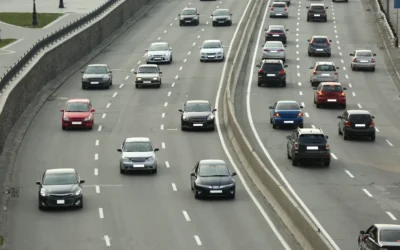Introduction
Accidents are stressful, but when they involve a rental vehicle, they can feel even more overwhelming. Whether you’re driving an unfamiliar car in an unfamiliar place or dealing with the fine print of a rental agreement, the situation can quickly become complicated. For victims or their loved ones, understanding what to do next—and how to protect their rights—is essential.
At Hurt Aid, we know navigating the aftermath of any accident can feel like a daunting task, especially when rental vehicles are involved. Our mission is to provide the clarity, resources, and support you need to face these challenges confidently. Whether you’re seeking answers for yourself or helping someone else through this journey, you’re in the right place.
In this article, we’ll dive into the most common issues people encounter in rental vehicle accidents, from liability confusion to the complexities of insurance coverage. By the end, you’ll have a clear understanding of the challenges and practical steps to take, empowering you to move forward with confidence. Let’s break it down, together.
Common Causes of Rental Vehicle Accidents
Rental vehicle accidents can happen for various reasons, some of which are unique to the nature of renting and driving an unfamiliar car. Understanding these causes can help you better prepare for potential risks.
Driver-Related Issues
One of the most common factors in rental vehicle accidents is the driver’s unfamiliarity with the vehicle itself. Adjusting to a car’s controls, size, or handling can take time, and this learning curve increases the likelihood of an accident. Other common challenges include:
- Distracted Driving: Navigating unfamiliar roads often requires GPS or map use, which can lead to divided attention.
- Fatigue: Many rental vehicle users are traveling long distances or are jet-lagged, impairing their focus and reaction times.
Vehicle-Related Issues
Not all rental vehicles are in top condition. Mechanical problems or poor maintenance can lead to accidents, such as:
- Brake failures.
- Tire blowouts.
- Faulty headlights or turn signals.
Additionally, choosing the wrong type of vehicle for the terrain or conditions—like using a compact car for snowy or mountainous areas—can increase risks.
Environmental Factors
Driving in an unfamiliar location comes with its own set of challenges, including:
- Unfamiliar Traffic Laws: Differences in road rules, signage, and right-of-way laws can confuse drivers.
- New Terrain: Navigating winding roads, steep inclines, or congested city streets can be daunting.
- Weather Conditions: Rain, snow, or fog in an unfamiliar climate can lead to accidents.
Third-Party Negligence
Sometimes, the accident isn’t the renter’s fault. Another driver’s negligence, hazardous road conditions, or poorly marked construction zones can contribute to rental vehicle accidents. In such cases, understanding how liability is determined becomes crucial.
By recognizing these common causes, you can better understand why rental vehicle accidents occur and how to navigate the complexities they create. Let’s now explore the unique challenges that make these accidents more complicated than typical vehicle collisions.
Unique Challenges in Rental Vehicle Accidents
Rental vehicle accidents present unique challenges that can complicate the aftermath for victims and their families. These challenges often arise from the added layers of legal, contractual, and logistical complexities that rental vehicles bring to the table.
Liability Confusion
Determining who is at fault in a rental vehicle accident isn’t always straightforward. Liability can involve multiple parties, including:
- The Renter: If the driver was negligent or failed to follow traffic laws, they might be held responsible.
- The Rental Company: If the vehicle was poorly maintained or had mechanical issues, the rental company could share liability.
- Third Parties: Other drivers, pedestrians, or entities like road maintenance crews may also be involved.
Sorting out these responsibilities can be a daunting process, especially when rental agreements and insurance policies come into play.
Insurance Complexity
Insurance coverage is one of the most confusing aspects of rental vehicle accidents. Victims often find themselves juggling multiple policies, such as:
- Personal Auto Insurance: Many drivers rely on their personal policy, but coverage terms vary.
- Rental Company Insurance: Collision Damage Waivers (CDW) or Supplemental Liability Insurance (SLI) offered by rental companies often come with limitations and exclusions.
- Credit Card Benefits: Some credit cards provide rental car insurance, but the coverage may only apply under specific conditions.
Understanding which policy applies, the extent of coverage, and how to coordinate claims between providers can be overwhelming for victims.
Jurisdictional Challenges
Rental vehicle accidents often occur far from home, which adds another layer of complexity. Victims may face challenges such as:
- Different State Laws: Legal requirements, including statutes of limitations and liability rules, vary from state to state.
- International Incidents: For accidents abroad, dealing with foreign laws, language barriers, and unfamiliar legal processes can be incredibly stressful.
Documentation Gaps
Accidents involving rental vehicles frequently occur in unfamiliar locations where gathering evidence is more difficult. Challenges include:
- Contacting Witnesses: Witnesses may be tourists or locals who are hard to reach after the accident.
- Documenting the Scene: Victims may not know the best practices for collecting evidence, such as taking photos of the vehicle or road conditions.
These unique challenges can complicate a victim’s ability to navigate the legal and financial aftermath of an accident. In the next section, we’ll discuss the types of legal claims commonly associated with rental vehicle accidents to help you better understand your rights.
Common Legal Claims in Rental Vehicle Accidents
When a rental vehicle accident occurs, victims may be entitled to pursue several types of legal claims. The type of claim often depends on the circumstances of the accident, the parties involved, and the available evidence.
Negligence Claims
Negligence is one of the most common legal grounds for seeking compensation after an accident. In rental vehicle accidents, negligence claims might be directed at:
- Other Drivers: If another driver’s reckless or distracted driving caused the accident.
- The Renter: If the individual driving the rental vehicle was negligent, such as texting while driving or speeding.
To succeed in a negligence claim, the injured party must prove:
- The at-fault party owed a duty of care (e.g., safe driving practices).
- The duty of care was breached.
- The breach directly caused the accident and resulting injuries.
Breach of Contract Claims
Rental agreements include terms and conditions that outline the responsibilities of both the renter and the rental company. If the rental company fails to uphold its obligations—such as providing a safe, well-maintained vehicle—a victim may have grounds for a breach of contract claim.
For example, if a vehicle’s brakes fail due to poor maintenance, and this failure leads to an accident, the rental company could be held responsible for violating the terms of the rental agreement.
Product Liability Claims
In some cases, a rental vehicle accident may result from a defect in the car itself. This could include issues like:
- Defective airbags.
- Tire failures.
- Malfunctioning brakes.
When a mechanical defect is the root cause, victims may file a product liability claim against the vehicle’s manufacturer or any party in the distribution chain responsible for the defect.
Third-Party Claims
Third-party claims arise when another entity contributed to the accident. Examples include:
- A trucking company whose driver caused a collision.
- A government entity responsible for maintaining the road where the accident occurred.
- A contractor that left hazardous debris at a construction site.
These claims can add layers of complexity, as multiple parties may be involved in determining fault and liability.
Insurance Disputes
In many cases, disputes with insurance providers become a significant part of the post-accident process. Victims may face challenges such as:
- Denials of coverage from the rental company’s insurance.
- Insufficient compensation offers from personal auto insurance or credit card providers.
- Conflicts between multiple insurance policies over which provider is responsible.
Understanding the types of claims available can empower victims to take informed action. In the next section, we’ll discuss the practical steps to take after a rental vehicle accident to protect your rights and strengthen your case.
Practical Steps to Take After a Rental Vehicle Accident
After a rental vehicle accident, it’s crucial to act quickly and effectively to protect your safety, legal rights, and financial well-being. These steps will help ensure you’re prepared to handle the aftermath, whether for yourself or someone you’re helping.
1. Prioritize Safety
Your first priority should always be safety. Take the following steps immediately after the accident:
- Check for Injuries: Ensure everyone involved is safe. Call emergency services if anyone is injured.
- Move to Safety: If it’s safe to do so, move the vehicle out of traffic to avoid further accidents.
- Turn on Hazard Lights: Make the scene visible to other drivers, especially at night or in poor weather.
2. Contact the Authorities
Report the accident to local law enforcement, regardless of its severity. A police report can serve as an essential piece of evidence when filing claims or pursuing legal action. Be sure to:
- Provide accurate details about the accident.
- Request a copy of the police report for your records.
3. Gather Evidence at the Scene
Collecting evidence is vital for supporting your case. Use your phone or a notepad to document the following:
- Photographs: Vehicle damage, the accident scene, including road signs, skid marks, traffic signals and visible injuries
- Witness Information: Get contact details from anyone who saw the accident
- Other Driver’s Information: Name and contact details, Driver’s license number, Insurance policy details, License plate number.
4. Notify the Rental Company
Contact the rental company as soon as possible to report the accident. Be prepared to:
- Provide the rental agreement number.
- Describe what happened and share any evidence collected.
- Follow their instructions for returning or exchanging the vehicle, if needed.
5. Notify Your Insurance Providers
If you carry personal auto insurance or used a credit card to pay for the rental, contact those providers to inform them of the accident. Ask specific questions about:
- What the policy covers.
- Steps to file a claim.
- How coverage works alongside the rental company’s insurance.
6. Keep Records of All Expenses
Track every expense related to the accident, including:
- Medical bills.
- Vehicle repair or replacement costs.
- Transportation costs while the vehicle is out of service.
- Lost wages if you’re unable to work due to injuries.
These records can help you build a strong case when seeking compensation.
7. Consult a Legal Professional
Given the complexities of rental vehicle accidents, consulting an attorney experienced in personal injury and insurance law can make a significant difference. They can:
- Assess liability.
- Help you navigate insurance disputes.
- Determine whether you have grounds for additional claims, such as product liability or negligence.
By taking these practical steps, you’ll be better positioned to protect your rights and pursue compensation for your losses. In the next section, we’ll highlight prevention tips to help reduce the likelihood of rental vehicle accidents.
Prevention Tips for Rental Vehicle Users
While accidents can’t always be avoided, taking proactive measures can significantly reduce the likelihood of a rental vehicle accident. These tips are essential whether you’re renting a car for business, leisure, or any other purpose.
1. Read and Understand the Rental Agreement
Before you drive away, thoroughly review the rental contract. Pay close attention to:
- Insurance Coverage: Understand what the rental company’s insurance or Collision Damage Waiver (CDW) covers, as well as any exclusions.
- Liability Terms: Check for limitations on your liability and ensure you’re not unintentionally accepting unnecessary risks.
- Usage Restrictions: Note any restrictions, such as driving in certain areas or allowing additional drivers.
2. Inspect the Vehicle Before Driving
Conduct a detailed inspection of the rental vehicle to document any pre-existing damage. Take the following steps:
- Check for Visible Damage: Look for scratches, dents, or cracks in the windshield.
- Test Essential Features: Ensure that headlights, brakes, turn signals, and windshield wipers are functioning properly.
- Take Photos or Videos: Document the car’s condition with timestamped images or videos and share them with the rental company before leaving.
3. Familiarize Yourself with the Vehicle
Take a few minutes to get comfortable with the rental car before hitting the road:
- Adjust the seat, mirrors, and steering wheel for proper visibility and comfort.
- Locate essential controls, such as headlights, windshield wipers, and hazard lights.
- Practice using the GPS or other onboard technology to minimize distractions while driving.
4. Drive Defensively in Unfamiliar Areas
When navigating unknown roads, defensive driving can help you avoid accidents:
- Follow Traffic Laws: Pay extra attention to local speed limits, road signs, and right-of-way rules.
- Avoid Distractions: Set your GPS route before you start driving, and avoid using your phone.
- Stay Alert: Be aware of pedestrians, cyclists, and other drivers who may behave unpredictably.
5. Ensure Adequate Insurance Coverage
Before renting a car, confirm your insurance coverage:
- Personal Auto Insurance: Check whether your policy extends to rental vehicles and what it covers.
- Credit Card Benefits: If you’re relying on a credit card for coverage, verify the terms and exclusions.
- Additional Coverage: Consider purchasing supplemental insurance from the rental company if your existing policies are insufficient.
6. Plan for Weather and Terrain
If you’re traveling to an area with unique driving conditions, such as snowy mountains or busy urban centers:
- Choose a vehicle suited for the environment (e.g., a four-wheel-drive for snowy terrain).
- Check the weather forecast and prepare for conditions like rain, fog, or ice.
- Drive cautiously and adjust your speed to match road conditions.
7. Have an Emergency Plan
Being prepared for unexpected situations can reduce panic if something goes wrong:
- Keep emergency contact numbers handy, including the rental company and your insurance provider.
- Carry a first aid kit, flashlight, and other essentials in the vehicle.
- Know the location of nearby gas stations, service centers, and hospitals.
By following these prevention tips, you can minimize risks and enjoy a safer experience with your rental vehicle. In the final section, we’ll summarize the key takeaways and emphasize how Hurt Aid can provide support when accidents happen.
Conclusion
Rental vehicle accidents can be daunting, but understanding the common causes, unique challenges, and practical steps to take can make a significant difference in navigating the aftermath. Whether you’re dealing with unfamiliar insurance policies, sorting out liability, or gathering evidence, preparation and knowledge are your greatest tools.
If you or someone you care about has been involved in a rental vehicle accident, remember you don’t have to face the complexities alone. At Hurt Aid, we’re here to help you every step of the way, providing trusted resources, connections to experienced attorneys, and compassionate support during challenging times.
Take control of your situation today. Visit Hurt Aid to learn more about your legal options and get the guidance you need to move forward with confidence.





